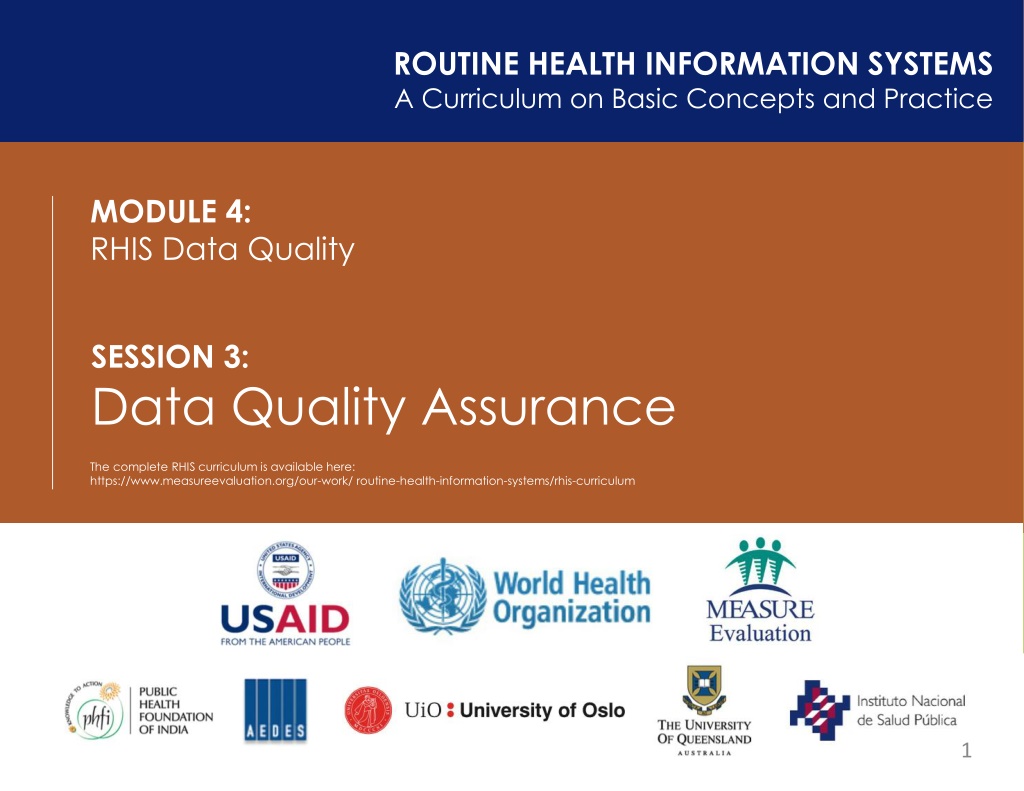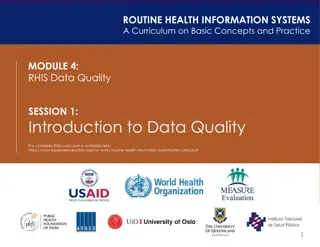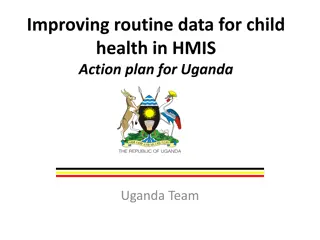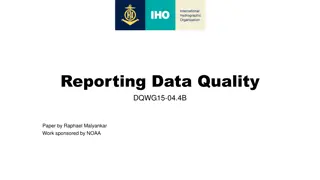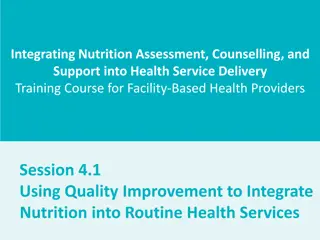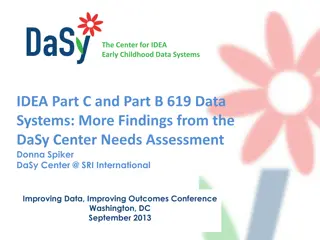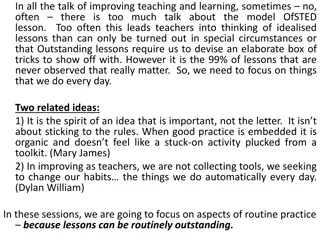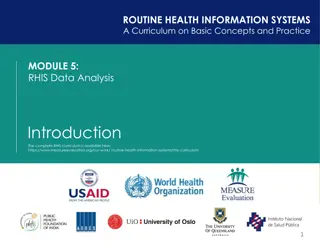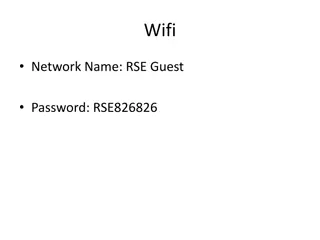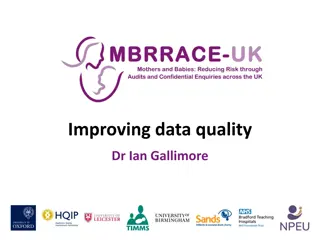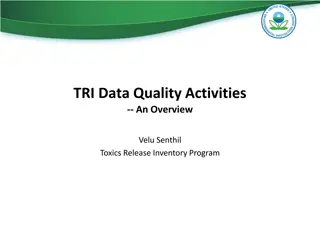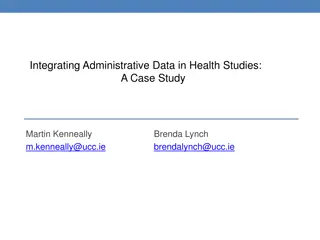Ensuring Data Quality in Routine Health Information Systems
Learn about data quality assurance in routine health information systems, including its definition, importance, methods, and impact on decision-making. Explore the roles and responsibilities of different health system levels in maintaining data quality to support accountability, program improvement, strategic planning, and evidence-informed decision-making.
Download Presentation

Please find below an Image/Link to download the presentation.
The content on the website is provided AS IS for your information and personal use only. It may not be sold, licensed, or shared on other websites without obtaining consent from the author. Download presentation by click this link. If you encounter any issues during the download, it is possible that the publisher has removed the file from their server.
E N D
Presentation Transcript
ROUTINE HEALTH INFORMATION SYSTEMS A Curriculum on Basic Concepts and Practice MODULE 4: RHIS Data Quality SESSION 3: Data Quality Assurance The complete RHIS curriculum is available here: https://www.measureevaluation.org/our-work/ routine-health-information-systems/rhis-curriculum 1
Learning Objectives and Topics Covered Learning Objectives Define data quality assurance Understand the importance of data quality assurance Describe WHO s data quality review a framework for data quality assurance Understand the roles and responsibilities of health system levels for maintaining data quality Differentiate between types of tools & methods for measuring data quality Understand how to integrate data quality assurance with routine supportive supervision Understand the value of monitoring and using data quality assessment results over time Topics Covered Define data-quality assurance Understand data-quality assurance responsibilities at different health- management levels 2
What Is Data Quality Assurance? An explicit combination of methods and activities that are carried out for the purpose of reaching and maintaining high levels of data quality A critical factor for generating and sustaining high-quality data (accurate, complete, and timely) A system to ensure that data are collected, maintained, monitored, transformed into useful information, and interpreted in ways that maintain high quality and accuracy for all users 3
Importance of Data Quality for Data Use and Decision Making Data quality assurance is critical for health information systems to: Ensure accountability and reporting Strengthen programs and improve results Enhance quality of services Plan strategically Support requests for resources Contribute to lessons learned Identify trends and needs Support changes in delivery of programs and services Justify changes in technical and administrative policies Provide evidence-informed clinical decision making 4
Roles and Responsibilities for Maintaining Data Quality by RHIS Levels Central Level Health Facilities (Service Delivery Sites) Intermediate Level Provide guidelines on data collection, reporting, and management procedures Review reports received; submit aggregated reports Ensure timeliness and completeness of reporting Collect and enter initial data Ensure timeliness and completeness of reporting Monitor quality of data throughout all levels Summarize patient data and check quality of registers Monitor quality of data captured and reported Monitor quality of data captured and reported Submit and complete summary reports on time Conduct routine supervisory visits Conduct routine supervisory visits Routinely analyze and use data Routinely analyze and use data Routinely analyze and use data 5
Rationale for a Harmonized Approach to Data Quality Assurance Data quality issues are systemic, not program-specific. Current efforts on data quality assurance are unsystematic, inefficient, and burdensome to the health system. Multiple assessments for different diseases/programs are inefficient and burdensome for the health system. The application of a standard framework to evaluate data quality enables the understanding of the adequacy of routine data used for health sector planning. A harmonized approach permits stakeholders to know that the routine data have undergone a known minimum level of scrutiny, which gives the data credibility and increases stakeholders confidence in them.
WHO Data Quality Review (DQR) Framework Multipronged approach to assessing data quality from health facilities Routine & regular reviews (e.g., monthly) of data quality that are built into a system of checks & part of supportive supervision and feedback Annual independent assessment examining quality of health facility data for annual health sector planning & program monitoring In-depth reviews of data quality that focus on single disease/program area that are conducted periodically (3-5 years)
Data Quality Assurances Processes Functioning information systems Clearly defined indicators, used consistently Description of specific roles and responsibilities Reporting timelines Standardized data collection and reporting forms Documented data review procedures Steps to address data quality challenges Storage policyand filing practices for easy retrieval 8
Examples of Data Quality Tools Designed to verify the quality of reported data and assess data management and reporting systems Assessment/monitoring Simplified version of DQA formerly used by programs RDQA: Routine Data Quality Assessment (MEASURE Evaluation) PRISM: RHIS Performance Diagnostic Tool (MEASURE Evaluation): Assessment Part of PRISM tool package Assessment National desk review and site visits Updated version of WHO s Data Quality Report Card (DQRC) DQR: Data Quality Review (WHO/MEASURE Evaluation) 9
Data Quality Assurance Methods Supportive supervision/self-assessments Independent assessments/audits 10
Distinctions between Independent Assessment and Supportive Supervision Approaches Supportive supervision/self- assessment Independent assessments/auditing Driven internally Driven externally, often by funding agency Flexible Standard and structured Conducted by program or district managers using its M&E system Conducted by external audit team Encourages dialogue to set data-quality improvement priorities Capacity-building is not primary objective Results often not translated into data improvement Objective is to develop actions that will strengthen program 11
Final Thoughts on Data Quality Data Quality Make good use of what you collect Collect what is needed Promote data quality so that staff produce accurate, reliable, complete, and on-time data/reports Provide feedback on data collected and outputs/outcomes Empower staff to collect, verify, and use data 12
ROUTINE HEALTH INFORMATION SYSTEMS A Curriculum on Basic Concepts and Practice This presentation was produced with the support of the United States Agency for International Development (USAID) under the terms of MEASURE Evaluation cooperative agreement AID-OAA-L-14-00004. MEASURE Evaluation is implemented by the Carolina Population Center, University of North Carolina at Chapel Hill in partnership with ICF International; John Snow, Inc.; Management Sciences for Health; Palladium; and Tulane University. The views expressed in this presentation do not necessarily reflect the views of USAID or the United States government. 13
